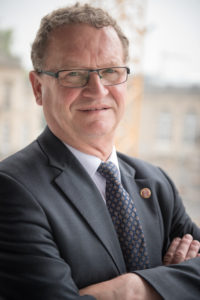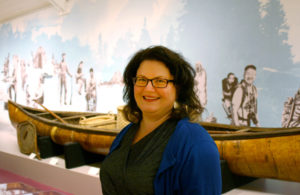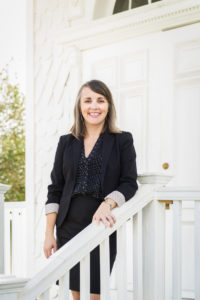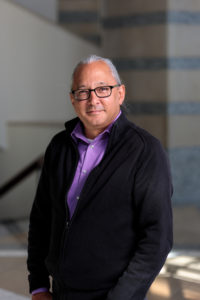Looking Inward: Addressing colonialism and racism in museum origin stories and collections (Part 2)
In this second part of our series, Looking Inward, we hear from Guido Gryseels, Cinnamon Catlin-Legutko, Ashley Rogers, and Joe Horse Capture about the logistical side of their work to address racism and colonialism in their museums. In the first post, they shared their vision and interpretive processes. This series responds to the National Geographic’s April, 2018 issue on Race, which turned its lens inward with the editorial, “For Decades, Our Coverage Was Racist. To Rise Above Our Past, We Must Acknowledge It.” As part of this reckoning, National Geographic asked historian, John Edward Mason to review its archives and report on how their over a century-old organization has represented people of color and non-western cultures, and shaped popular imagination around race throughout the 20th century. Unsurprisingly, he found decades of imagery and curatorial choices that constructed non-western, non-white others for consumption by American readers. Many American museums and historical societies were founded in the same era as National Geographic, and have collections and legacies shaped by colonialism and white supremacy, whose legacies we all must reckon with. In this two-part series, we hear from four colleagues about their respective strategies and approaches to identifying, and dismantling racism and colonialism in/through their museums.
THE RESPONDENTS
Cinnamon Catlin-Legutko, President/CEO, Abbe Museum
Joe Horse Capture, Director of American Indian Initiatives, Minnesota Historical Society
Guido Gryseels, Director General, Royal Museum for Central Africa (also known as The AfricaMuseum)
Ashley Rogers, Director of Museum Operations, Whitney Plantation
PART TWO
How has doing this work changed your daily operations and relationship to audiences?

Guido Gryseels: This change in vision and mindset has led to a gradual decolonization of the museum operations although we have to admit that this is work in progress. We’ve involved African diaspora in the planning and organization of activities for the public and of our renovation program. People of African origin now feel welcome in our new museum and we’ve attracted new audiences. The change process involved a change in mindset and a changing culture of the organization. Bringing in the African perspective and giving the floor to people from Africa and from African descent is critically important. Also in our scientific work this has major implications. The large majority of publications on Central Africa are written by scientists from the north. In the formulation, organization and conduct of research projects about Africa, African participation is now considered essential.
Cinnamon Catlin-Legutko: It has changed everything. We’re now working on policies, protocols, and practices that will transform the organization sustainably. And, our audiences are responding enthusiastically. We recently engaged in regular audience evaluation to confirm the anecdotes and Trip Advisor reviews. Interestingly, Trip Advisor reviews were the first indications that we were moving in a direction that audiences embrace. When a tourist returns home and writes about decolonization in a positive and encouraging light, that’s a clear metric to keep going and keep experimenting!
Joe Horse Capture: As we move forward with these initiatives, I feel the staff at MNHS appreciate the new awareness, and presenting diverse narratives to our audiences has had a positive impact. Certainly, the Native American constituency in Minnesota is slowly coming around and seeing that we are trying to do good work. But with any big changes, some areas are challenging. There are some outside of the museum that are resistant to our focus on diverse narratives. Furthermore, a major shift on focus within an institution has growing pains both externally and internally as we move forward. But once the momentum starts, it is nearly impossible to reverse. It creates a desire to do more.
There is often an assumption that funding priorities compete with education or interpretive plans to decolonize museums. Was this the case for you? How and why, or why not?
Guido Gryseels: A major component of our decolonization process was to promote diversity in our organization and to attract more people of African origin among our staff. This objective however met the practical realities of a severe funding cut over the last five years in which our budget and staffing were reduced by the federal government by 15-20%. Very few of the departing staff could be replaced due to lack of funding. This of course severely reduces the opportunities for proactive recruitment and our objective of promoting greater diversity will take longer than expected to reach the targets.

Cinnamon Catlin Legutko: Nope! Absolutely was not the case for us. Decolonization is the only “thing” we do now. All of our work is aligned through this lens and our funding appeals as well. New donors and foundations are attracted to our work and federal grants are ready, willing, and able to support these types of initiatives. Fear is really the only barrier and at the Abbe, it isn’t a reality.
Ashley Rogers: I could see this being a problem with other institutions – but we are in completely different circumstances. We are a very tiny institution with no separate departments and only four full-time salaried staff members. 100% of our funding comes from earned revenue, so our interpretive choices have a direct impact on our funding and our visitors come to us wanting challenging narratives. What I can say from my experience at Whitney over four years is that there is ample funding and ample earned revenue potential for museums that do this type of work. Funding sources may change, but museums should rest assured that being forward-thinking even as they look backward and correct past practices will serve them well.
What were the largest hurdles to doing this work?
Guido Gryseels: The largest hurdles to do were to change the mindset of our staff and the culture of the organization, not only in our exhibits and cultural activities, but also in our research work.

Ashley Rogers: It is painful! Truly! If it doesn’t hurt you, you’re probably not really doing it. We all cry and get upset at Whitney. We all have our feelings hurt. We all get offended. It’s definitely a lesson in keeping your eyes on the prize. This country has a wrenching sore at its heart that we’ve never even tried to treat. We’re all sick from it. The challenge is remembering that we are all in this together, and that good work is frequently hard and painful. And too: sometimes it is scary! We live in an interesting historical moment right now. Our staff’s eyes are trained on events like Charlottesville and Charleston. When discussions about memory over the Civil War get heated, people start talking about Whitney. We are very much a part of the national conversation about race and we are grateful to be used as a tool for people to understand systems of oppression and their current reverberations but sometimes we can feel uncomfortably exposed as well. We want visitors to come here and be challenged. We want them to think about their lives and their communities in new ways. We want them to learn about American chattel slavery and have their minds opened. But we want to do all that and keep our own staff safe.
What have been your greatest joys and successes in doing this work?
Guido Gryseels: We see our largest success in the rapid change of thinking and of mindset about the colonial past in the Belgian society. Even at a political level, there is a growing realization that colonization was an immoral system and that many of today’s societal problems found their origin in that period. The general feeling is now more critical than ever before.
Ashley Rogers: I think the biggest sense of success comes from everyday interactions with people who say that their lives are changed by visiting our site. I know we are doing something right when I see visitors come off a tour and talk openly with each other or with their tour guide about race. We don’t like to do that in this country. There’s something really opening about having this experience, if you let it open you.

Joe Horse Capture: It has been very rewarding to have Native groups, especially the Dakota, participate in the process as we work towards the opening of Fort Snelling at Bdote revitalization project. It has certainly been challenging for both parties after MNHS signed a partnership agreement with the Dakota Community Council. Within that agreement, it is stated that to resolve differences we must listen to each other with respect and integrity. NAI’s work with the DCC has been very rewarding because it opens up a new chapter in the relationship with Native Americans and MNHS. Although there is still a lot of work to do be done, the partnership agreement illustrates that major institutions can work with and share responsibility in a historic site that the Dakota view as sacred land.
Any advice you’d give to museum workers who are just contemplating beginning the process of addressing institutional legacies of racism and colonialism?
Ashley Rogers: You probably know it’s going to be hard. It’s unlikely you know exactly how hard, or how much it will challenge you and put stress on your staff. Talk to others who have done the work in precisely the way you want to do the work. Put in support systems for your staff. Make sure your black interpreters know about the Black Interpreters’ Guild closed Facebook group. Most of all, make sure that your entire staff is on board and ready for the work – from the leadership to every level of front-line staff. Messaging is important. And know that people of color on your staff will probably feel the burden differently and more intensely than white staff members. If they aren’t supported by leadership, this work will ring hollow and you will lose key advocates.
Lauren Monsein Rhodes, Sarah Sims, and Emily Potter-Ndiaye all serve on the current Board of Directors for the Museum Education Roundtable

